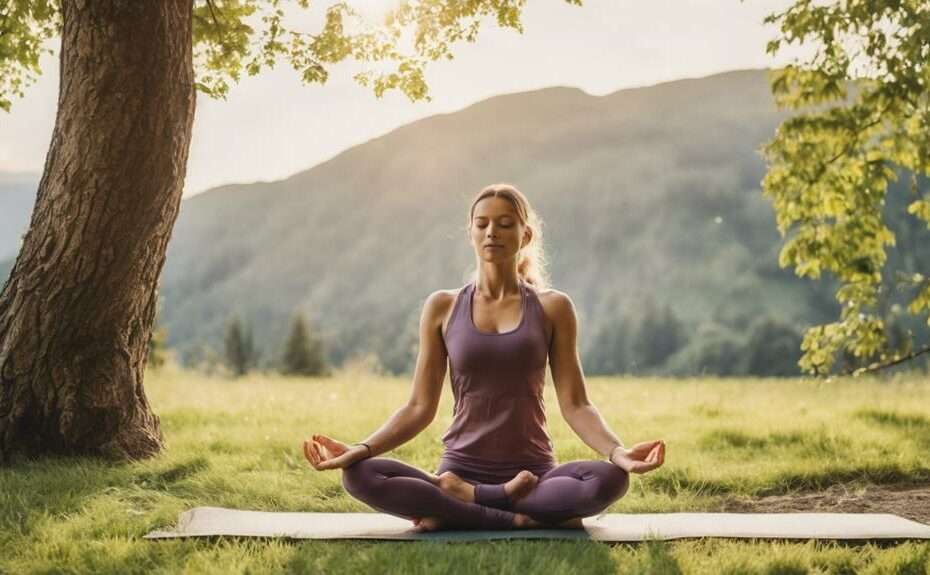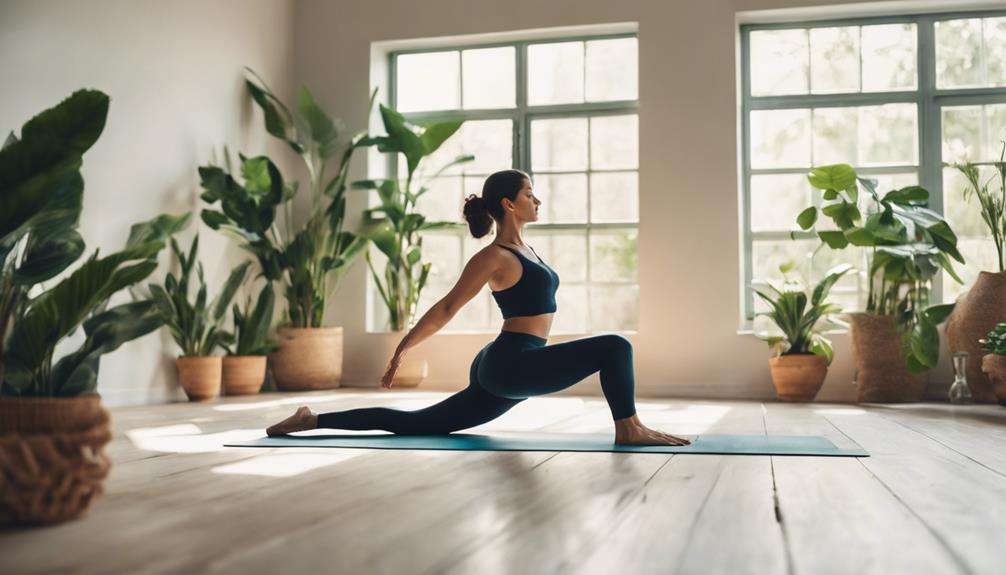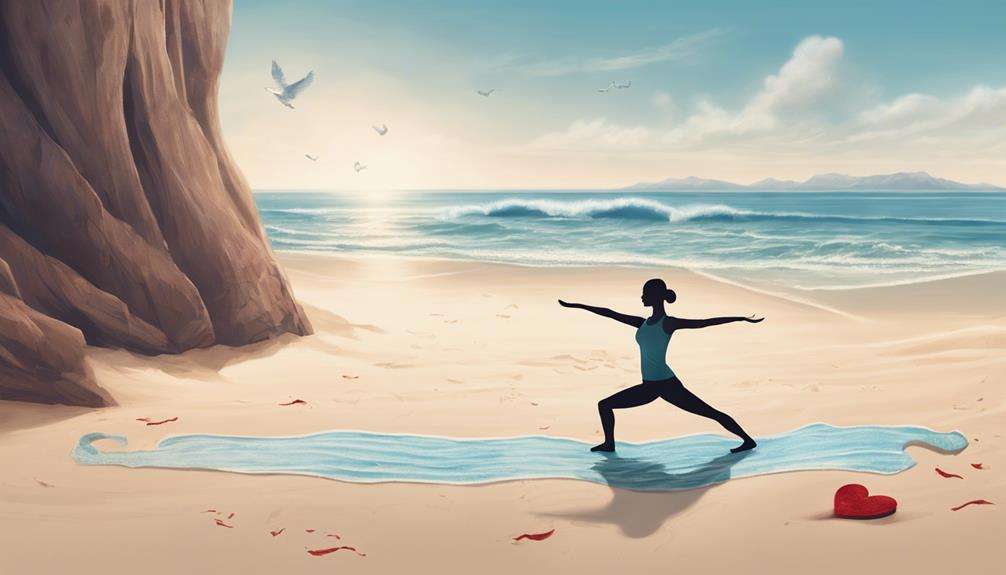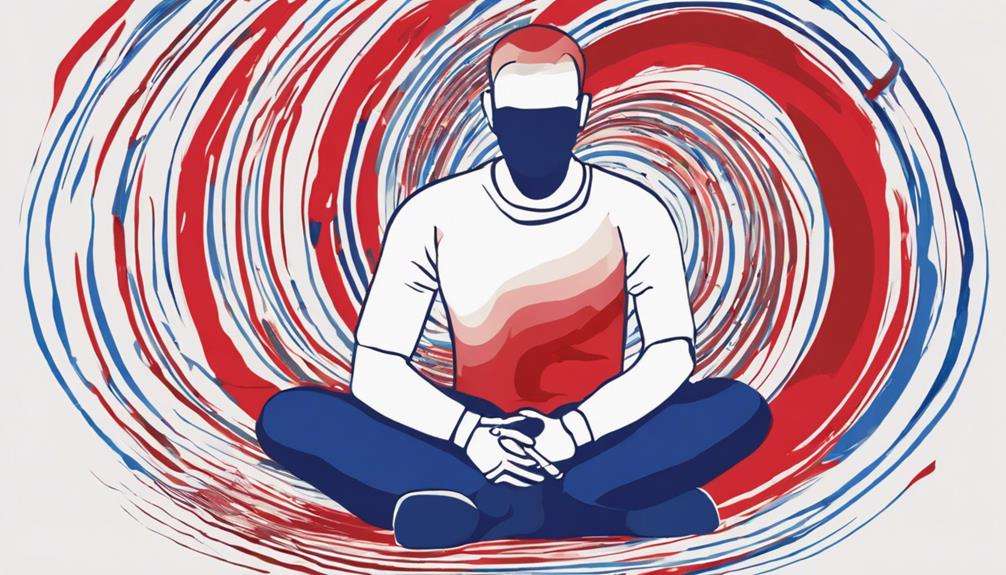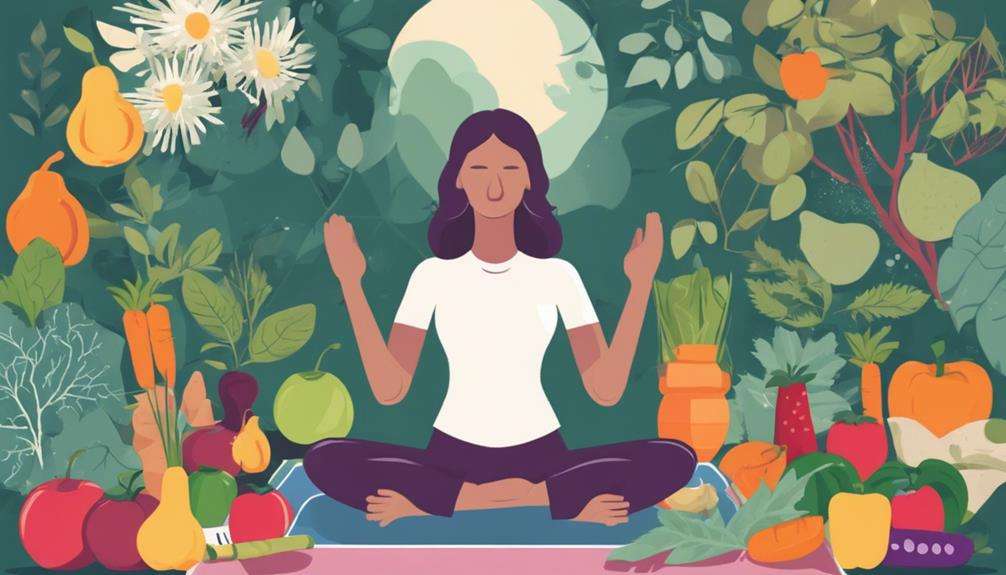When it comes to managing your blood pressure, practicing yoga poses can be like taking a calm stroll in a serene garden. Imagine the peace and tranquility that can flow through your body with each intentional movement and breath.
As you explore the gentle yet powerful world of yoga poses tailored to lower blood pressure, you might find yourself intrigued by the profound impact they can have on your overall well-being.
So, why not discover how these ancient practices can help you achieve a sense of balance and harmony within yourself?
Key Takeaways
- Child Pose (Balasana) promotes relaxation and reduces stress, aiding in lowering blood pressure.
- Easy Pose (Sukhasana) enhances focus and mental clarity, contributing to blood pressure management.
- Cobra Pose (Bhujangasana) improves circulation, flexibility, and heart health, supporting blood pressure reduction.
- Standing Forward Bend (Uttanasana) and Seated Forward Bend (Paschimottanasana) help lower blood pressure and promote overall well-being.
Child Pose (Balasana)
Child Pose, also known as Balasana, is a calming yoga posture that can help you lower your blood pressure by promoting relaxation and reducing stress. This gentle pose not only stretches your hips, thighs, and ankles but also improves circulation, which is beneficial for managing blood pressure.
By practicing Balasana regularly, you can take a holistic approach to blood pressure management through yoga. One of the key benefits of Child Pose is its ability to soothe the nervous system, making it particularly suitable for individuals dealing with high blood pressure. When you focus on deep breathing while in this pose, you can further lower your blood pressure and enhance your overall well-being.
Easy Pose (Sukhasana)
Incorporating Sukhasana into your practice can bring numerous benefits. Proper alignment is key to reaping the full advantages of this pose.
Learning specific breathing techniques can further enhance your experience and deepen your practice.
Benefits of Sukhasana
Sukhasana, also known as Easy Pose, offers a multitude of benefits that promote relaxation, mental clarity, and improved focus. This seated posture helps lower stress levels, regulate breathing patterns, and calm the mind, reducing stress and anxiety.
By practicing Sukhasana regularly, you can improve your posture, which in turn enhances relaxation throughout your body. The pose's ability to promote mental clarity makes it a valuable tool for increasing focus and concentration.
Whether you're a beginner or seasoned practitioner, Easy Pose is accessible to all levels and supports your journey towards a peaceful state of mind. Incorporating Sukhasana into your routine can have a profound impact on your overall well-being and mental health.
Proper Alignment Tips
To secure proper alignment in Easy Pose (Sukhasana), sit cross-legged with your pelvis in a neutral position to maintain spinal integrity. Confirm your knees are below your hips and your shins are comfortably crossed to prevent strain on the lower back.
Engage your core muscles, lengthen your spine upward, and relax your shoulders down and back. This posture opens up your chest, enhancing breathing and blood flow. By placing your hands on your knees or in a mudra position, you can further boost focus and energy flow during your Sukhasana practice.
These alignment tips not only promote physical well-being but also support mindfulness practices, aiding in lowering blood pressure levels.
Breathing Techniques for Sukhasana
Ease into Sukhasana by focusing on your breath, a key element in enhancing relaxation and reducing stress.
In this yoga pose, deep and controlled breathing plays an important role in naturally lowering high blood pressure and promoting heart health. By practicing Sukhasana with mindful breathing, you can experience its calming effects on the mind and body.
The deep breaths taken in this pose help reduce stress and anxiety levels, leading to a slower heart rate and decreased blood pressure. Sukhasana is accessible to beginners and can be modified with props like cushions for added support.
Regular practice of this pose with focused breathing can not only reduce stress but also improve overall well-being and mental clarity.
Corpse Pose (Shavasana)
Lie down on your back with your arms resting by your sides and your legs slightly apart to practice the calming and rejuvenating Corpse Pose, also known as Shavasana. This relaxing and calming yoga pose is more than just lying still; it has the power to reduce stress, lower blood pressure, and induce a deep state of relaxation. By allowing your body to rest fully and your mind to unwind, Shavasana promotes overall well-being.
Incorporating Shavasana into your yoga routine can be a game-changer for managing high blood pressure and enhancing mental clarity. The simplicity of this pose belies its profound effects on both the body and mind.
Cobra Pose
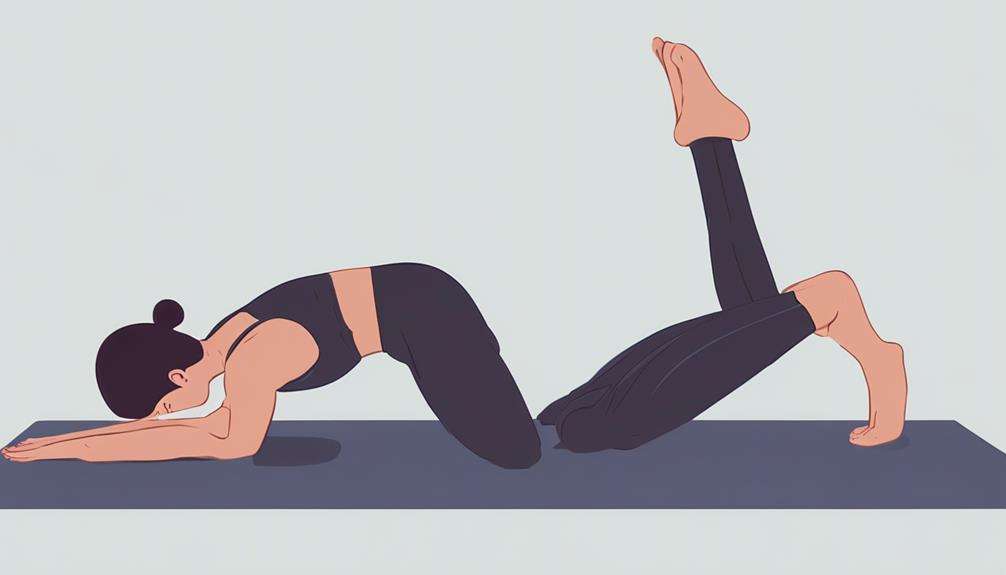
Let's talk about the benefits of Cobra Pose.
The proper form tips are essential to reap the full benefits. When done correctly, Cobra Pose can help improve blood circulation and flexibility in your spine, relieving stress and strengthening your shoulders and arms.
Remember to engage your core, keep your elbows close to your body, and breathe deeply to maximize the benefits of this energizing pose.
Benefits of Cobra
Cobra pose, also known as Bhujangasana, offers a multitude of benefits for both your body and mind. By practicing Cobra pose, you can increase blood circulation, relieving stress and tension in your body. This asana is excellent for strengthening your back muscles and enhancing flexibility in your spine, promoting overall spinal health.
Additionally, Cobra pose helps stimulate your abdominal organs, aiding in digestion and improving gut health. Regular practice of this pose may also alleviate sciatica pain and discomfort, providing relief to those suffering from such issues.
Moreover, Cobra pose opens up your chest and lungs, boosting respiratory function and allowing for better oxygen flow throughout your body. Embrace the benefits of Cobra pose for a healthier you!
Proper Form Tips
Shifting from the benefits of Cobra, mastering proper form in this pose is key to maximizing its benefits and preventing injury.
To assure proper alignment, place your hands directly under your shoulders. As you lift the chest, keep your elbows close to avoid lower back strain. Engage your leg muscles by pressing the tops of your feet firmly into the mat. Focus on lengthening the spine to create space between the vertebrae. Maintain a steady gaze forward and breathe deeply to enhance the pose's benefits.
Breathing Techniques
To enhance the benefits of Cobra Pose and promote relaxation, focus on incorporating controlled deep breathing techniques into your practice.
Cobra pose, also known as Bhujangasana, involves deep breathing that can help calm the nervous system, reduce stress, and increase blood circulation, all of which are beneficial for heart health and lowering blood pressure.
By engaging in smooth, deep breaths during Cobra pose, you can trigger the relaxation response in your body, leading to a sense of calmness and well-being.
Regular practice of this pose not only improves flexibility and strengthens the back muscles but also supports overall cardiovascular health.
Embrace the power of controlled breathing to maximize the positive effects of Cobra pose on your mind and body.
Bridge Pose

For those seeking to lower their blood pressure through gentle yet effective yoga poses, Bridge Pose, also known as Setu Bandhasana, offers a wonderful opportunity to calm the mind and reduce stress. This pose is particularly beneficial for blood pressure regulation as it helps in calming the brain and reducing stress levels. By practicing Bridge Pose, you stimulate the abdominal organs, aiding in digestion and potentially contributing to lower blood pressure over time. Additionally, this pose helps improve blood circulation, which is essential for heart health and overall well-being.
Bridge Pose involves gently stretching the chest, neck, and spine, releasing tension and promoting relaxation. Regular practice of this pose, combined with a healthy lifestyle, may assist in the better management of high blood pressure. So, next time you roll out your yoga mat, remember to include Bridge Pose in your routine to support your journey towards lower blood pressure and improved well-being.
Mountain Pose
As you move from the calming effects of Bridge Pose to the foundational grounding of Mountain Pose, you change into a posture that focuses on alignment and stability in your yoga practice. Mountain Pose, also known as Tadasana, serves as a cornerstone for many other yoga poses. By aligning your spine, strengthening your legs and core muscles, this pose helps improve your posture, balance, and stability.
Embracing Mountain Pose not only benefits your physical body but also aids in reducing stress, enhancing focus, and promoting a sense of grounding and stability. Through regular practice of this pose, you can increase body awareness, improve overall body alignment and posture, and cultivate inner strength. Let Mountain Pose be your anchor, grounding you in the present moment and providing a sense of calm amidst life's chaos. Trust in the stability it offers as you journey towards better health and well-being.
Cat-Cow Pose

Incorporate the gentle flow of Cat-Cow Pose into your yoga practice to enhance spinal flexibility and promote relaxation in your body.
This yoga pose, also known as Marjaryasana-Bitilasana, involves the movement between arching and rounding the back, which can help alleviate back pain and reduce stress.
By practicing Cat-Cow Pose regularly, you not only improve spinal flexibility but also massage the spine and enhance circulation to the discs, benefiting your overall health.
This pose is particularly effective in releasing tension in the back, neck, and shoulders, contributing to a sense of relaxation and well-being.
The gentle motion of Cat-Cow Pose can also aid in improving your posture and stimulating the abdominal organs, supporting your heart health and enhancing circulation.
Embrace the therapeutic benefits of Cat-Cow Pose to nurture your body and mind, fostering a harmonious balance within yourself.
Standing Forward Bend
To experience the calming and stress-reducing benefits of Standing Forward Bend (Uttanasana), gently fold forward from your hips, allowing your body to relax and your mind to unwind. This pose not only stretches your hamstrings and spine but also helps improve blood circulation, which can aid in lowering blood pressure and managing hypertension. By practicing Standing Forward Bend regularly, you can promote relaxation and overall well-being.
However, if you have back injuries or conditions like sciatica, it's crucial to avoid this pose to prevent exacerbating any existing problems. Remember to listen to your body and only go as far into the stretch as feels comfortable. Incorporating Standing Forward Bend into your yoga routine can be a valuable tool in your journey to reduce stress levels and support your cardiovascular health.
Seated Forward Bend
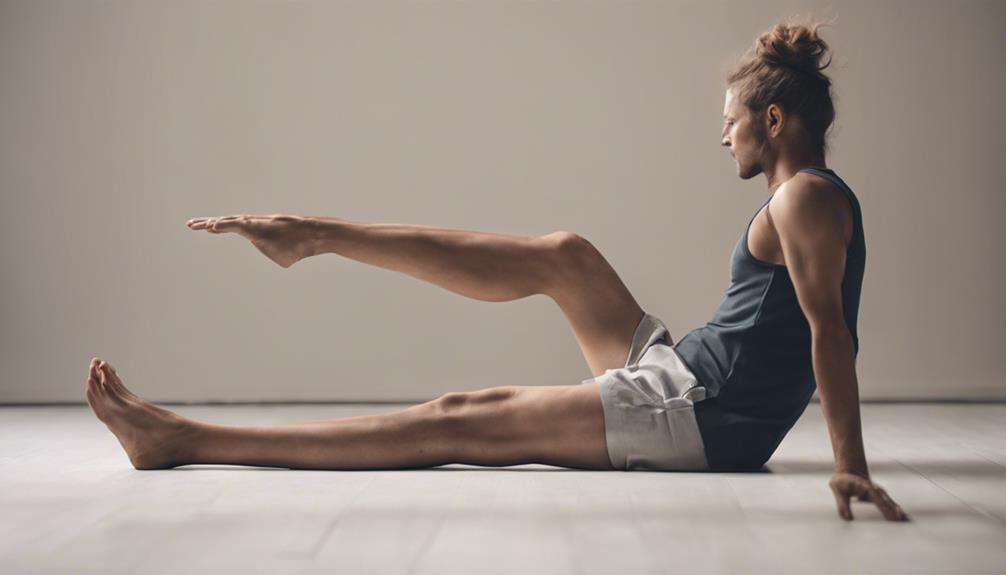
Begin your practice by sitting comfortably and extending your legs in front of you for the Seated Forward Bend pose, also known as Paschimottanasana. This gentle yoga pose is excellent for promoting flexibility in the spine, hamstrings, and lower back muscles.
Paschimottanasana not only helps in relieving tension in these areas but also stimulates the abdominal organs, aiding digestion and reducing stress levels. Regular practice of this soothing posture can effectively calm your mind, alleviate anxiety, and contribute to lowering high blood pressure over time.
Frequently Asked Questions
Which Yoga Is Best for Reducing High Blood Pressure?
For reducing high blood pressure, consider incorporating chair yoga, restorative poses, gentle stretches, and pranayama techniques. These practices aid in stress reduction, promote a mind-body connection, and offer meditation benefits through deep breathing, supporting overall well-being.
Does Legs up the Wall Help Lower Blood Pressure?
Legs up the wall pose, or Viparita Karani, helps lower blood pressure by promoting relaxation and improved circulation. It eases blood flow back to the heart, activating the calming parasympathetic nervous system for stress relief.
What Is the Best Exercise for High Blood Pressure?
For high blood pressure, the best exercise is a mix of cardio for heart health, weight management, strength training, stress reduction, healthy diet, and lifestyle changes. Incorporating meditation techniques in your routine offers a holistic approach.
Is Hot Yoga OK if You Have High Blood Pressure?
If you have high blood pressure, hot yoga may not be suitable. Consider safer alternatives like gentle yoga or restorative poses. Hot yoga can raise heart rate and blood pressure, posing risks for those with hypertension. Consult a healthcare provider for guidance.
Conclusion
To sum up, incorporating these yoga poses into your daily routine can help you manage high blood pressure effectively.
Remember, Rome wasn't built in a day, so be patient with yourself as you work towards better health.
Consistency is key, so keep practicing and stay committed to your well-being journey.
You've got this, warrior!
